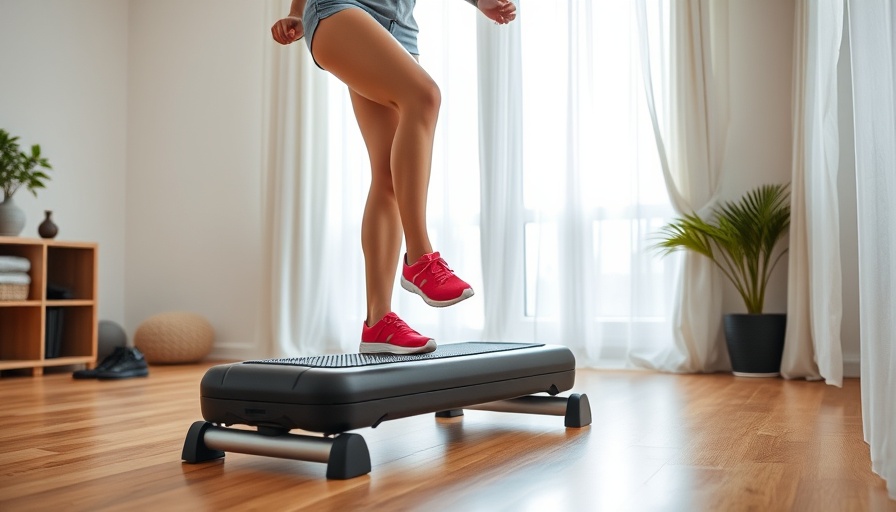
Understanding Rep Ranges: Tailoring Your Strength Training
When embarking on a fitness journey, particularly within a community that values health and wellness such as the SDA faith community, it's vital to recognize that not all workout routines yield the same results. The clarity provided in the recent video by Fitness Blender, Ideal Rep Ranges for Different Fitness Goals, sheds light on the importance of aligning workout strategies with specific fitness objectives. By understanding how the number of repetitions (reps) and rest periods affect training outcomes, you can maximize your efforts for improved strength, muscle growth, or endurance.
In the video Ideal Rep Ranges for Different Fitness Goals, the discussion dives into the importance of aligning workout rep ranges with specific fitness objectives, exploring key insights that sparked deeper analysis on our end.
Striking the Balance: Rep Ranges and Fitness Goals
According to experts, the number of reps you undertake during strength training can dramatically impact the goals you hope to achieve. Here’s a closer look at how different rep ranges correlate with fitness goals:
- Strength Building: If your primary aim is to increase your strength, it's essential to focus on lifting heavier weights with lower reps, typically between 1 to 6. Longer rest periods of about 2 to 5 minutes allow your muscles to recover adequately and prepare for the next set, ensuring that you're maximizing your lifting capacity.
- Muscle Hypertrophy: Aiming for muscle size or hypertrophy generally means working within an 8 to 12 rep range. This approach challenges the muscles to grow while allowing for moderate rest of about 60 to 90 seconds. Such training is ideal for those looking to enhance their physique.
- Muscular Endurance: For those focusing on endurance and conditioning, performing higher reps (12+) with shorter rest periods of around 30 seconds can significantly enhance your stamina and overall fitness levels.
It's also worth noting that many workout routines blend these approaches to cater to different goals. A well-rounded program might incorporate varying rep ranges targeting different muscle groups or objectives throughout the week.
Historical Context: Fitness Evolution over the Years
In understanding fitness goals, it's important to appreciate how training methods have evolved. Historically, strength training was often viewed through a singular lens, emphasizing heavy lifts as the ultimate measure of success. However, with advancements in sports science, fitness enthusiasts and professionals alike now recognize that training requires a tailored approach. This shift aligns with values found in the SDA community, promoting holistic wellness that encompasses both physical and spiritual health.
Current Trends in Fitness: A Community Perspective
Within the SDA community, the emphasis on wellness is not limited to personal physical fitness; it extends into community support and engagement. FitnessBlender's insight on rep ranges resonates with many individuals seeking to maintain a healthy lifestyle that aligns with SDA beliefs. Regular group workouts and fitness gatherings often incorporate diverse training goals, fostering unity and shared health objectives.
Actionable Insights: Crafting Your Own Strength Training Routine
To get started on your personalized strength training routine, consider these actionable strategies:
- Assess Your Goals: Clearly define what you want to achieve. Is it increased strength, muscle growth, or better endurance?
- Choose Your Rep Range: Select an appropriate rep range based on your identified goals. Always ensure proper technique and safety when lifting.
- Track Your Progress: Maintain a journal of your workouts, noting weights, reps, and personal observations. This log will help in adjusting your routine as needed.
Engaging in a structured program grounded in knowledge about rep ranges can significantly enhance your effectiveness and efficiency, ultimately leading to better fitness outcomes.
Conclusion: Embracing a Holistic Approach to Wellness
When considering your fitness journey, remember that creating a balance between strength training and endurance workouts is key. As emphasized in the Fitness Blender video, understanding rep ranges is crucial to achieving specific goals. Just as our faith encourages us to strive for balance in all aspects of life, so too should our approach to fitness reflect this wisdom.
Let your fitness routine not only serve your physical goals but also inspire and unite your community. Whether lifting heavier for strength, focusing on hypertrophy, or enhancing endurance, set forth on this journey with intention and care.
 Add Row
Add Row  Add
Add 




Write A Comment